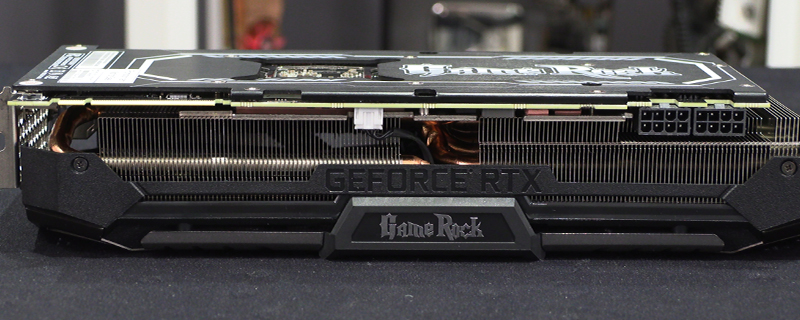Palit RTX 2080 Super Game Rock Review
Conclusion
Our initial impressions of the RTX 2080 Super were exciting. Throughout the history of Nvidia graphics cards – and indeed AMD ones – the stock card released by the manufacturer themselves was a taste of the new architecture. The partner cards then came along with their meaty coolers, factory overclocks and all that jazz to show us what that architecture could do when given the full beans. Given that the RTX 2080 was pretty impressive and the Super took things up a notch we couldn’t wait to find out if the partner cards were capable of taking an already good performer and pushing it up to the heights of a stock RTX 2080Ti. With the knowledge of how capable the earlier iterations of the Palit Game Rock were, and seeing the hefty cooler on this model, hopes were high.
With the Gigabyte card we found that there wasn’t quite as much performance available to be unlocked as we might have hoped, or perhaps that the Nvidia version was much nearer to the peak performance of the GPU than we expected. The Palit RTX 2080 Super Game Rock started off fairly disappointingly, not overclocking to the same heights as either the Nvidia or Gigabyte versions, and this lack of clock speed affected its performance throughout our testing. Obviously it’s still an RTX 2080 Super, so there is more than enough performance to handle any of the modern AAA titles at 1440 and, with some careful settings choices, 4K. The extra step up in performance that normally comes from a more efficient cooler hasn’t come to pass though, and with neither the stock setting nor with our manual overclock in place did the Game Rock get itself ahead of either of the two RTX 2080 Super cards we’ve benchmarked so far, even if it wasn’t far behind.
It is important to stress that the abilities of the Game Rock are roughly on a level with the other two TU104 GPU Super cards, but it does seem that the initial Nvidia card we tested was already pushing the architecture about as well as it can go and so strapping on ever better heatsinks might improve the temperatures you see, the fan noise you have to put up with, or how much spangly RGB lighting you can have, it just wont boost the card to new levels of frames per second. So if the performance of the Palit is about the same as the RTX 2080 Supers we’ve already looked at, we have to look at the extra details such as design and temperatures. Temperatures are excellent. The cooler on the Game Rock is extremely thick with high fin density giving a large surface area, fat heat pipes to spread that heat around, and good fans to dissipate it. Both at stock and overclocked it was below 65°C, and that’s impressive.
However, the one area we can’t overlook is the choice of font for the logo. Whatever you may feel about the Game Rock name itself, and it’s fine like all names are, the continued use of the Guitar Hero font has gone from being a quirky attempt to ride the coat tails of a phenomenon, to something that looks like it belongs in the 90s. Guitar Hero itself is long dead, and the lettering style was hardly an exercise in tasteful restraint then. We understand Palit might want to retain brand identity, but it wouldn’t have killed them to accept defeat and go with a more modern typeface, or perhaps not adorn the card so loudly with it. You might like it, we don’t. All design things are a matter of taste but without the performance to overlook it then it lowers the visual impact of the whole package.
Where Palit absolutely score with the Game Rock is in the pricing. It comes in at £710 which is significantly cheaper than nearly all its rivals, and with the same performance and a very good cooler if you can overlook the chintzy name then it’s a bargain and wins our OC3D Gamers Choice Award.
Discuss the Palit RTX 2080 Super Game Rock on the OC3D Forums.




